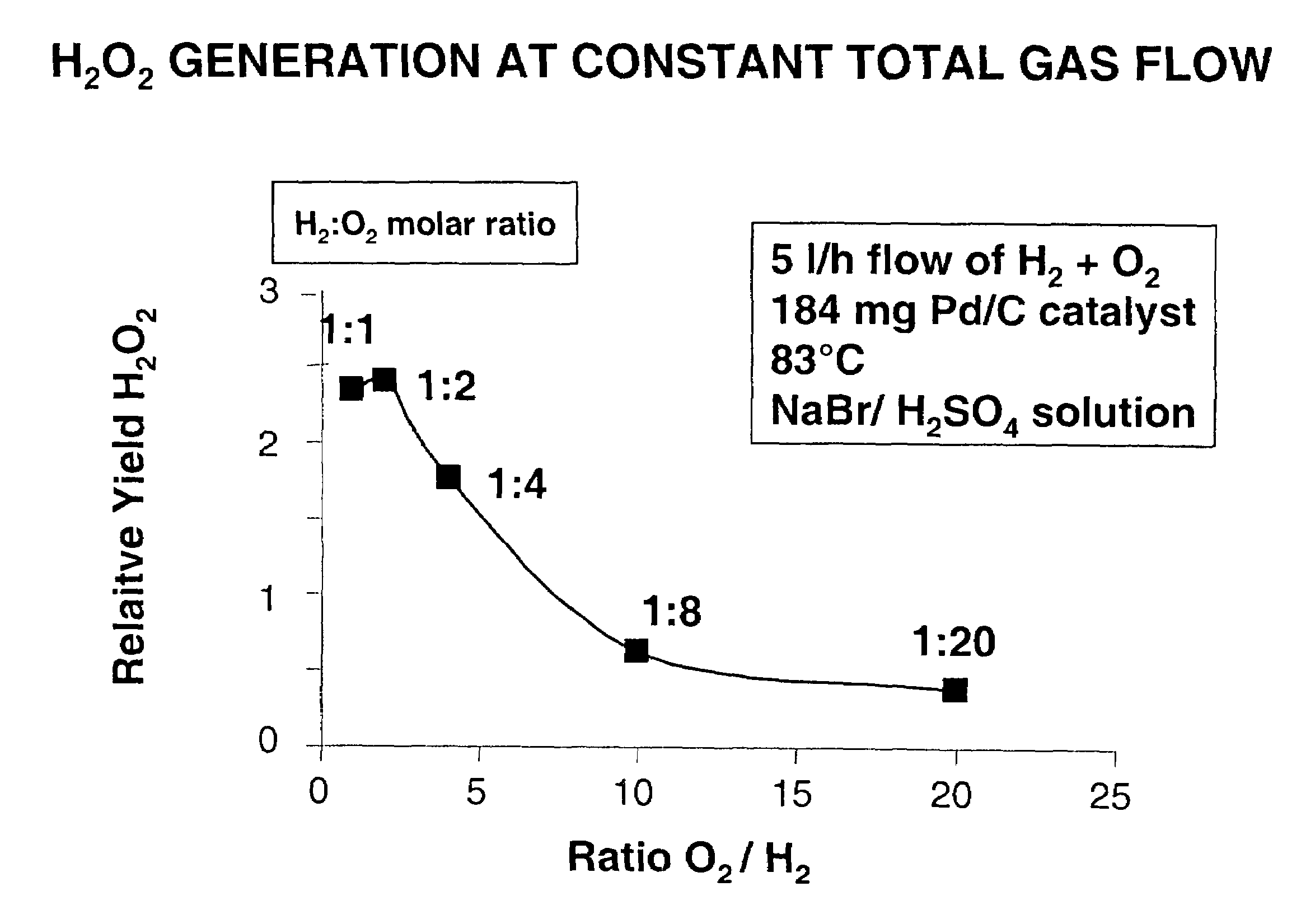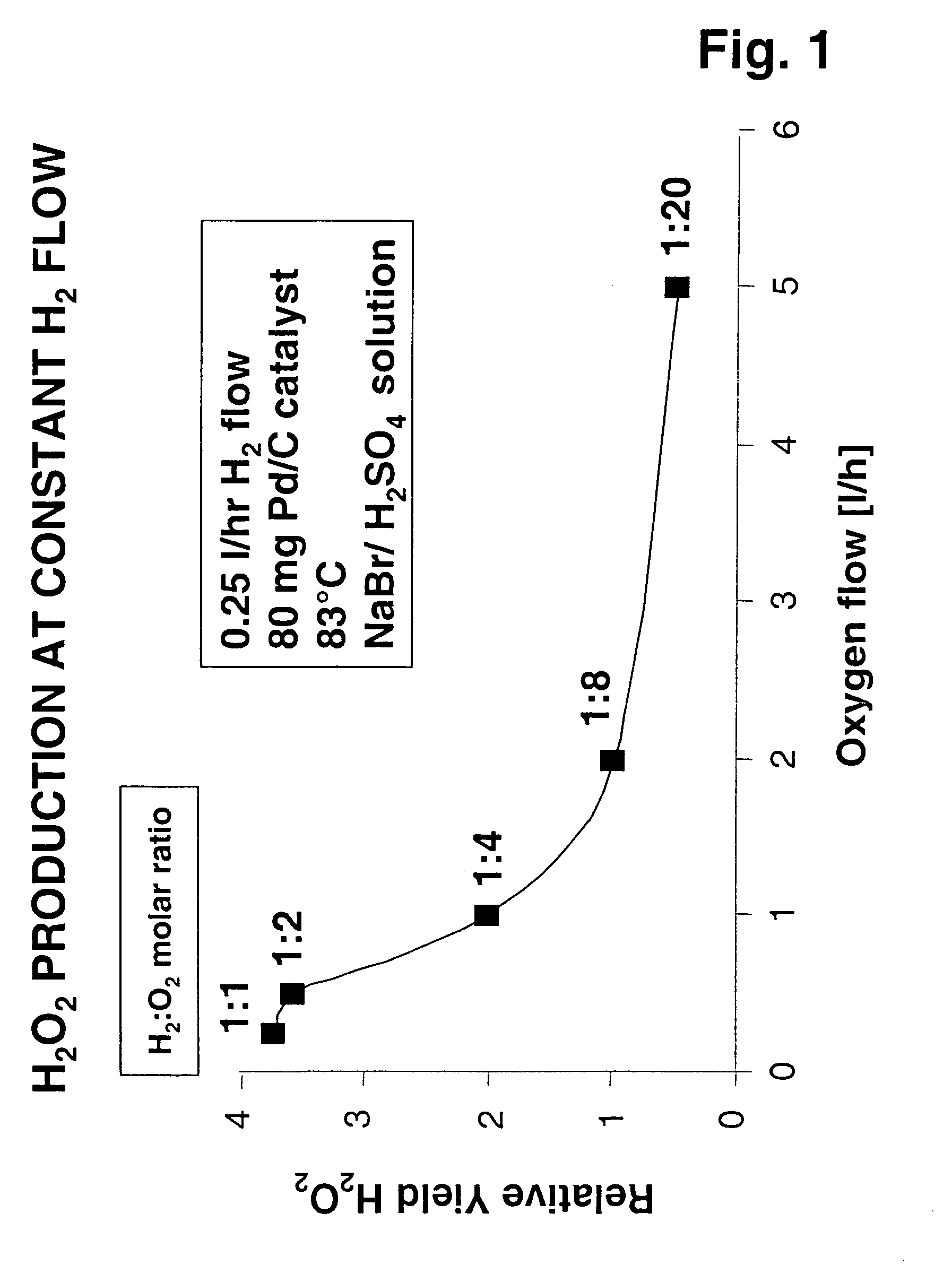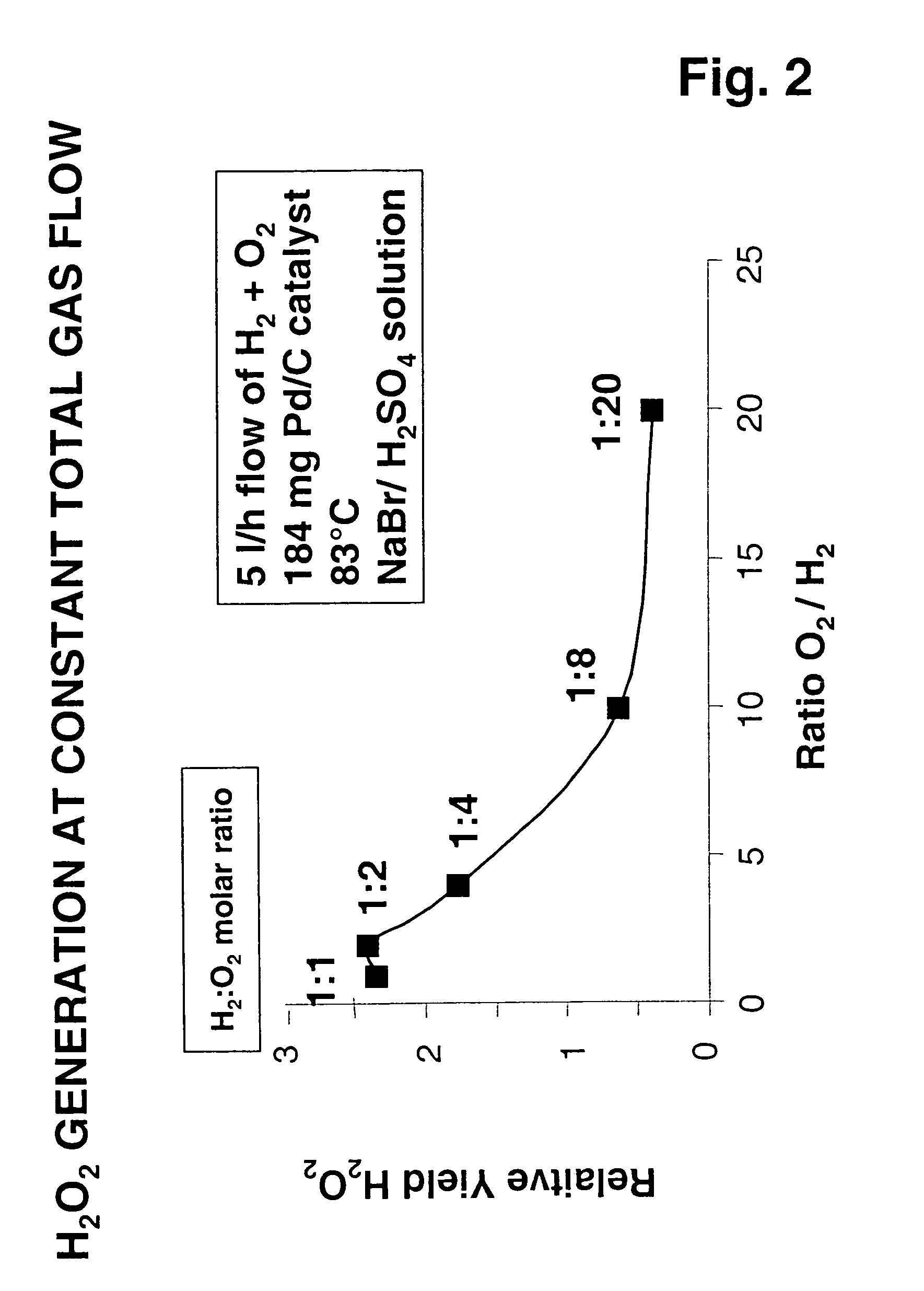Process for mixing and reacting two or more fluids
a technology of mixing and reacting fluids, applied in the field of mixing and reacting at least two fluids, can solve the problems of large structure, large narrow channel, and promote relatively high pressure loss
- Summary
- Abstract
- Description
- Claims
- Application Information
AI Technical Summary
Benefits of technology
Problems solved by technology
Method used
Image
Examples
examples 1 – 5
EXAMPLES 1–5
[0057]A static mixer comprising an arrangement of stacked plates and using the principle of cyclone mixing as described previously was constructed of glass to observe cyclone formation under various conditions. Water and air were injected into the mixing chamber in tangential and radial directions, respectively, with respect thereto. A high speed camera with digital image processing was used to observe whether a helical flow of the flowing liquid was established. This was readily determined from observing the path of gas bubbles within the water stream. The results of these experiments are summarized in Table 1.
[0058]
TABLE 1Kinetic EnergyCycloneWater FlowAir FlowRatioFormationExample #(ml / hr)(ml / hr)Water / air(Y / N)11007,8000.04N260012,0000.66Y390012,0001.49Y46003,6007.41Y59003,60016.7Y
[0059]From these results, the desired spiral flow formation was obtained with a kinetic energy ratio of liquid / gas of 0.66 and higher. The lower bound of the kinetic energy ratio of the tange...
examples 6 – 7
EXAMPLES 6–7
[0060]Experiments were performed using hydrogen peroxide formation conditions described previously. Tests were generally conducted with the reaction mixture of hydrogen and oxygen within the flammability envelope, although the molar ratio of these reactants varied in separate runs. Product hydrogen peroxide was dissolved and measured in a dilute aqueous solution of sulfuric acid and sodium bromide. This solution was passed continuously into the catalytic reaction zone, which was separated from the mixing zone by a conduit. The catalyst used in the reaction zone comprised palladium dispersed on activated carbon. Multilaminar mixing as described previously, using an interdigitated arrangement of fluid streams at the micrometer scale, was used to mix the gaseous reactants thoroughly prior to passing them through the conduit leading to a catalytic reaction zone. The onset of combustion / explosion was easily recognized based on a rapid temperature rise measured along the condu...
examples 8 – 12
EXAMPLES 8–12
[0061]Experiments were performed as described above using 80 mg of Pd-containing catalyst on an activated carbon support, a temperature of 83° C., at a constant hydrogen flow of 0.25 normal liters / hr (nl / hr). Again, the catalyst bed was in a reaction zone separated from the upstream multilaminar mixing operation by a conduit, in this case having a diameter of 100 μm. Oxygen flow was increased in a stepwise manner from 0.25 to 5 nl / hr to provide H2:O2 molar ratios of 1, 0.5, 0.25, 0.125, and 0.05. In each case, a homogeneous reactant mixture was obtained using a method of ultrafast micromixing in accordance with the present invention. While, except for the last experiment, these mixtures were within the flammability envelope, there was no evidence of explosion / combustion. Relative values of hydrogen peroxide yields under each condition are shown in FIG. 1. Despite the fact that most of these tests were performed with hydrogen and oxygen mixtures in explosive concentratio...
PUM
 Login to View More
Login to View More Abstract
Description
Claims
Application Information
 Login to View More
Login to View More - R&D
- Intellectual Property
- Life Sciences
- Materials
- Tech Scout
- Unparalleled Data Quality
- Higher Quality Content
- 60% Fewer Hallucinations
Browse by: Latest US Patents, China's latest patents, Technical Efficacy Thesaurus, Application Domain, Technology Topic, Popular Technical Reports.
© 2025 PatSnap. All rights reserved.Legal|Privacy policy|Modern Slavery Act Transparency Statement|Sitemap|About US| Contact US: help@patsnap.com



